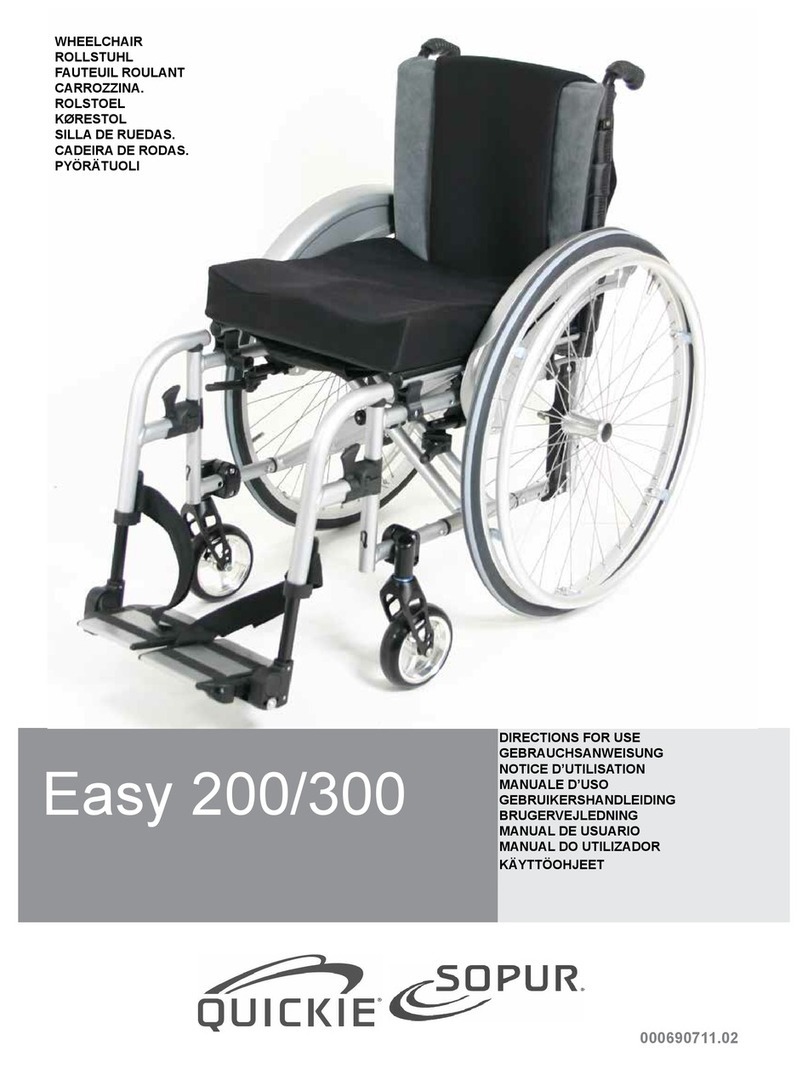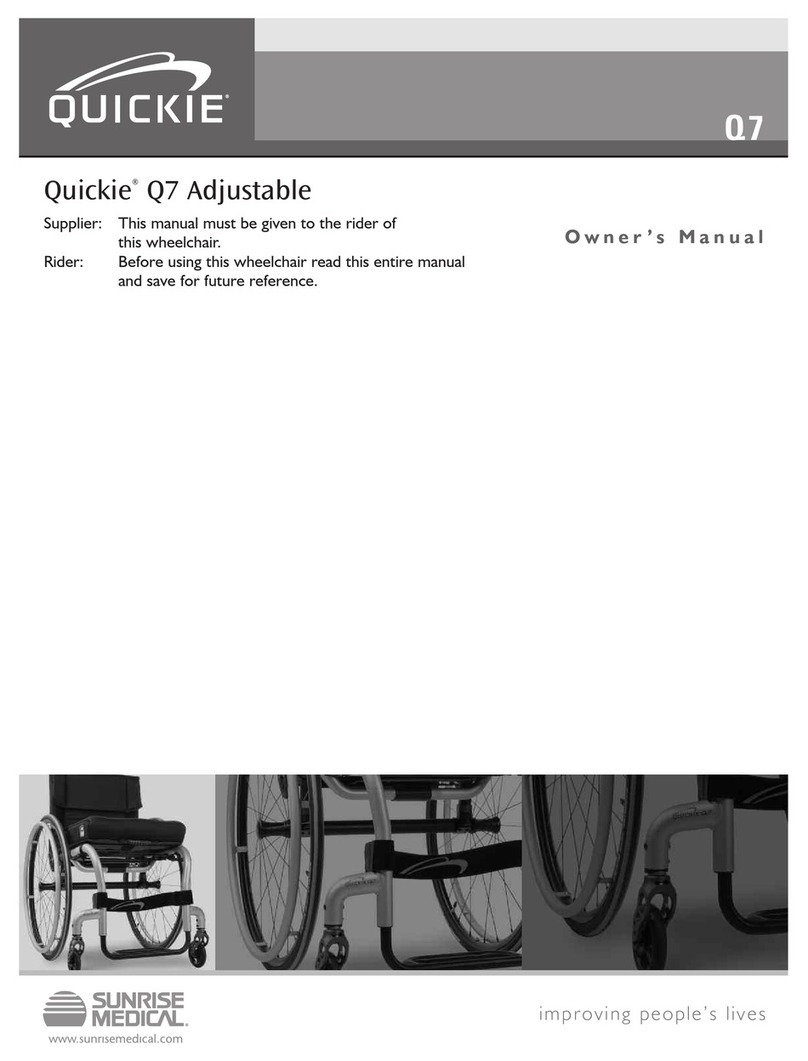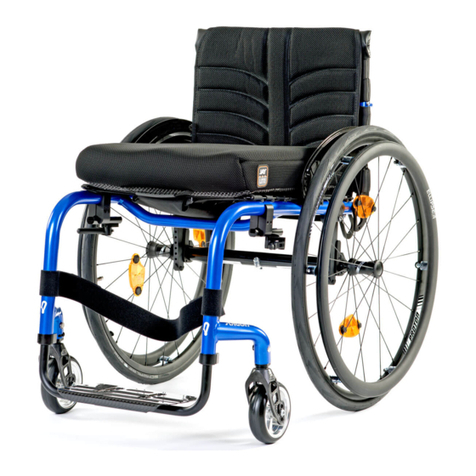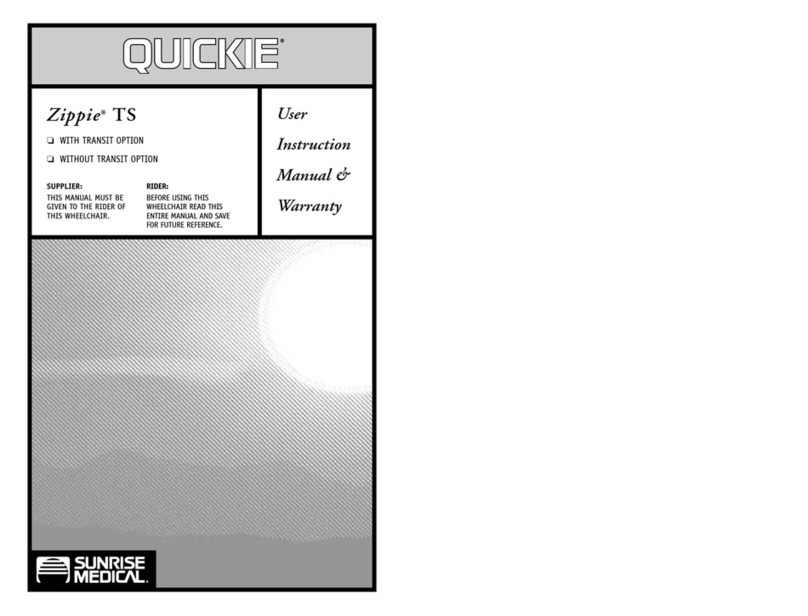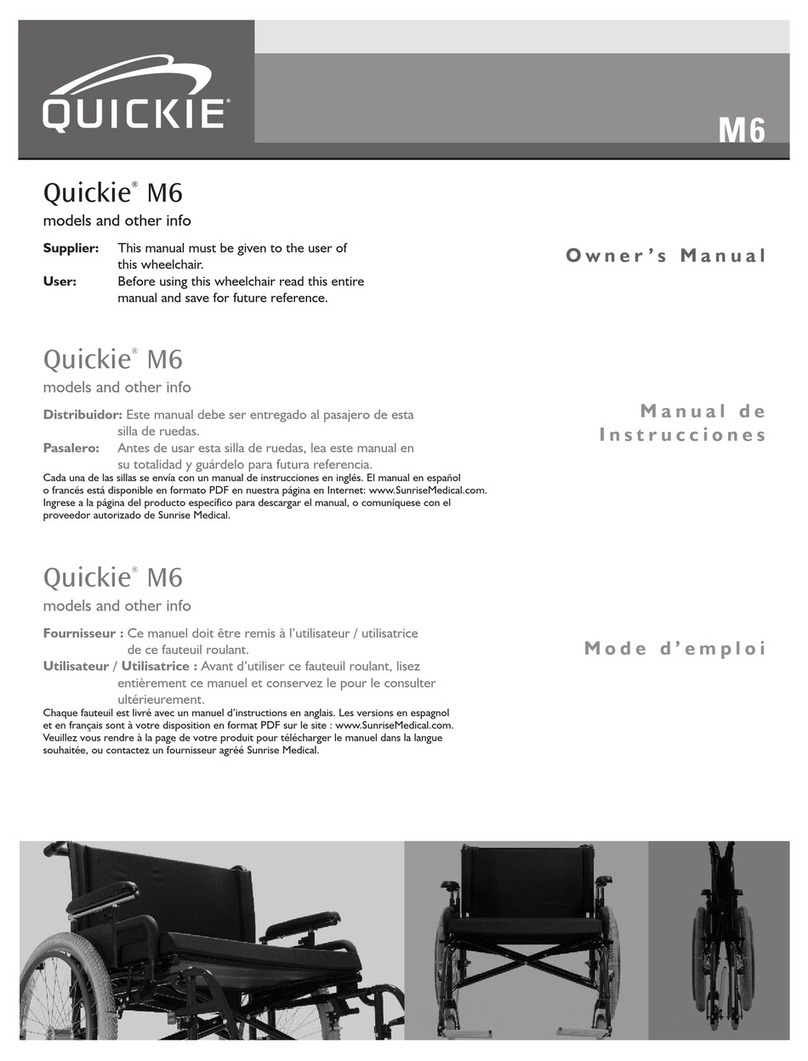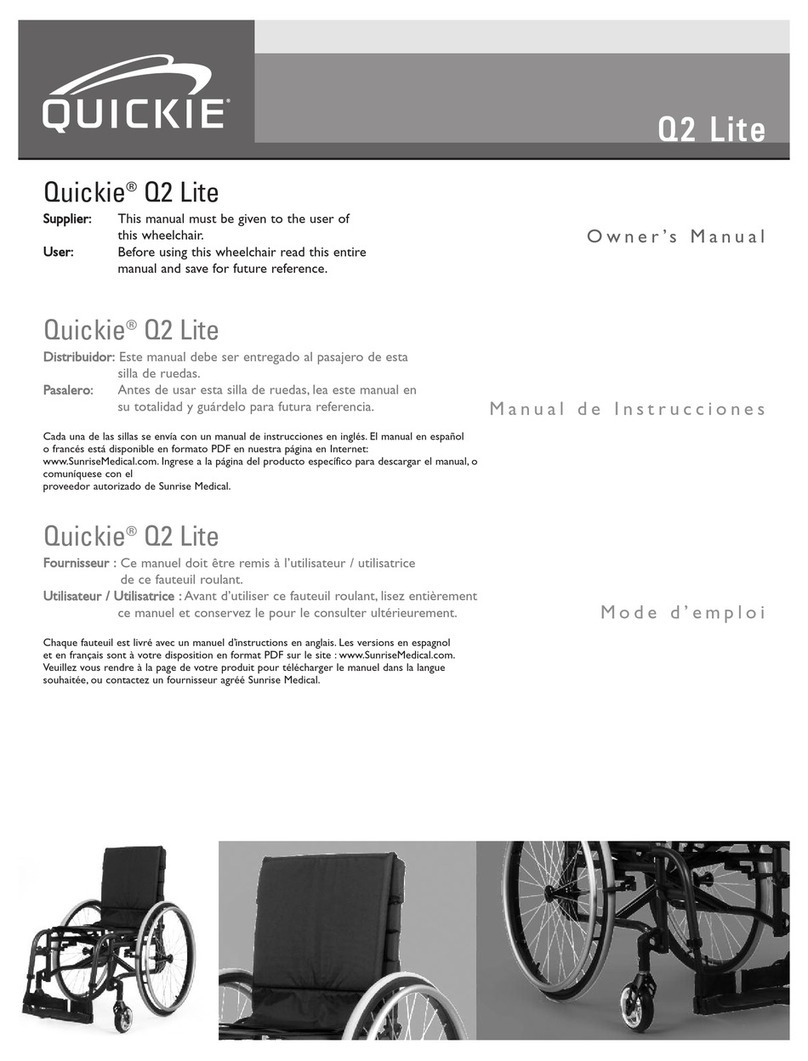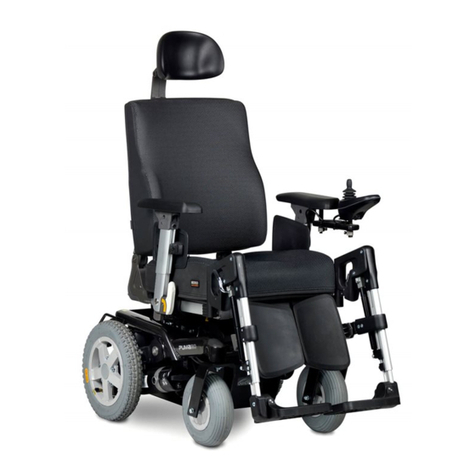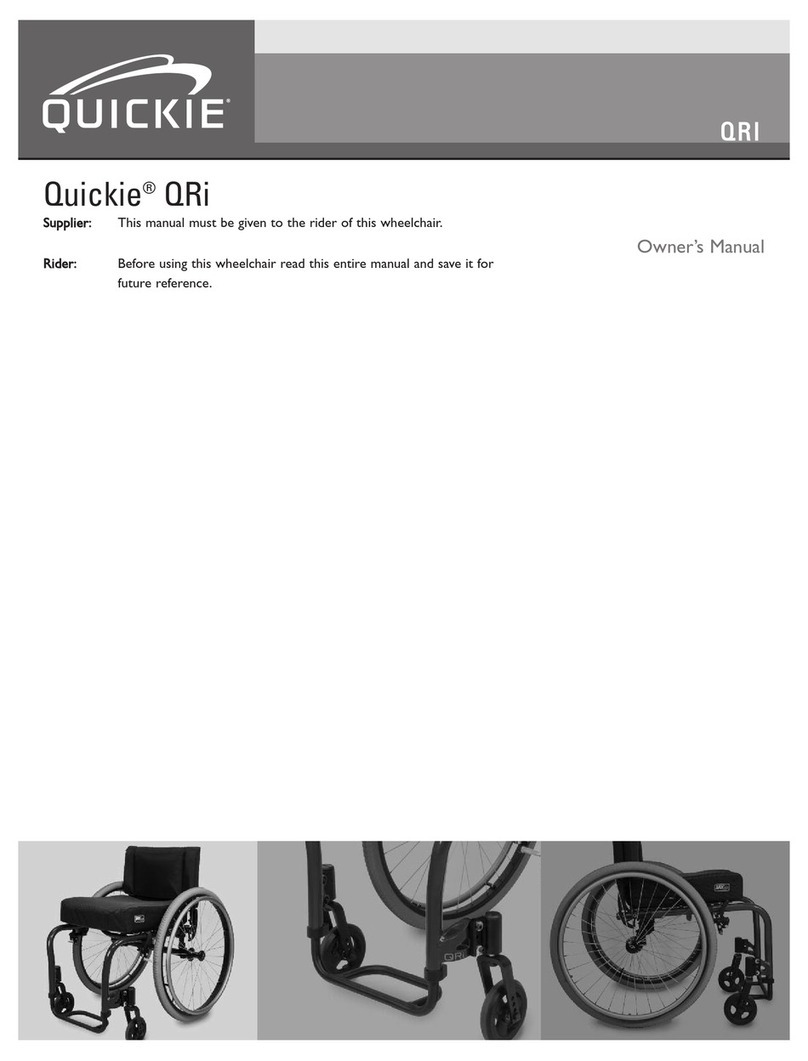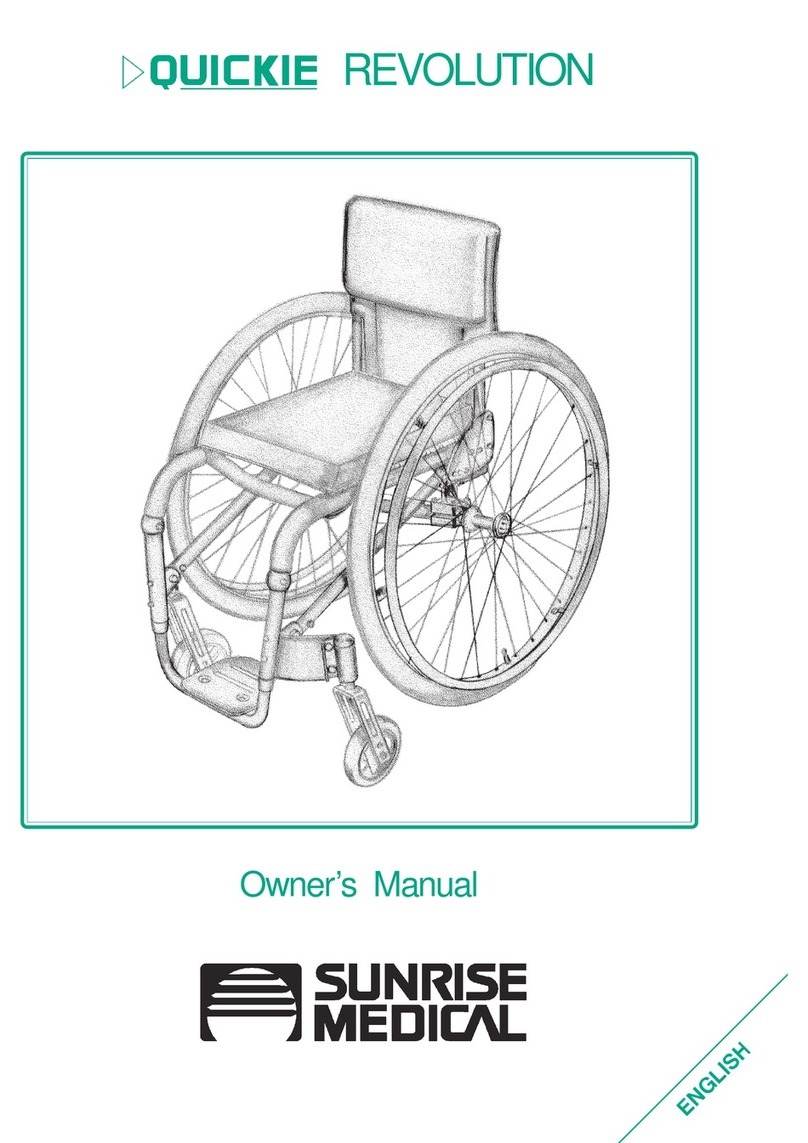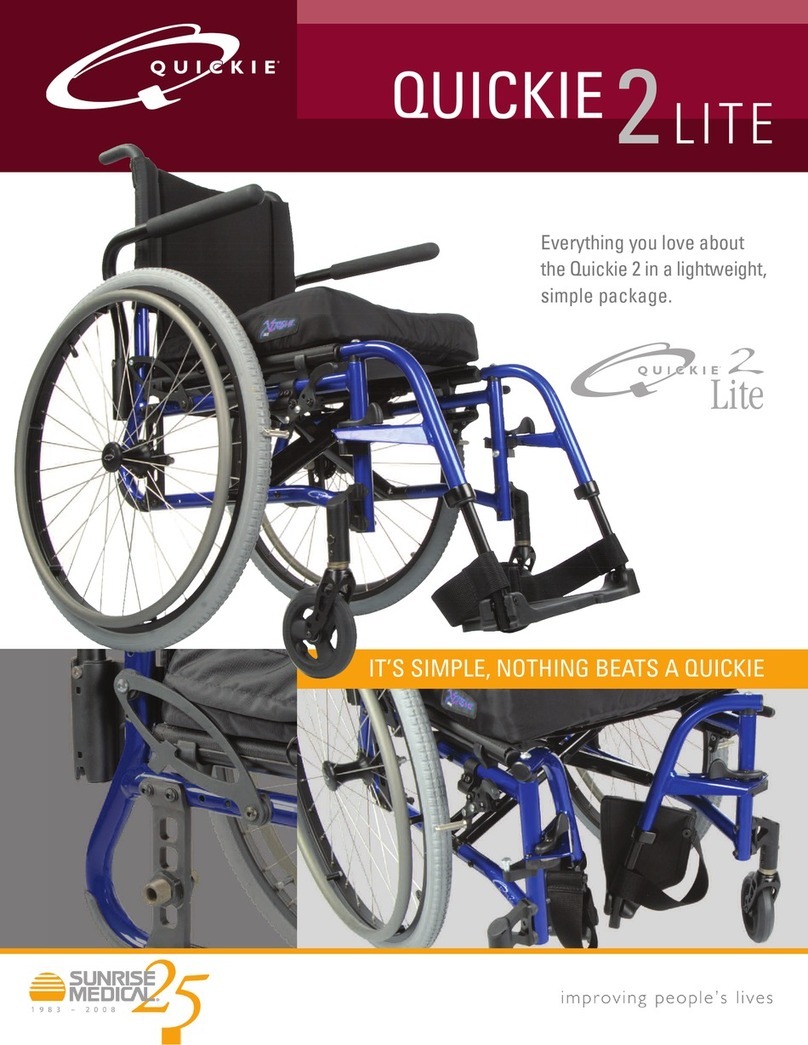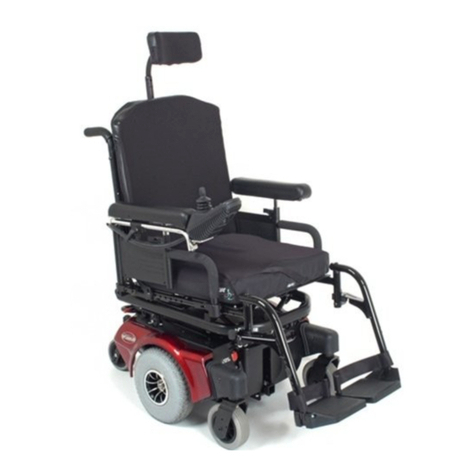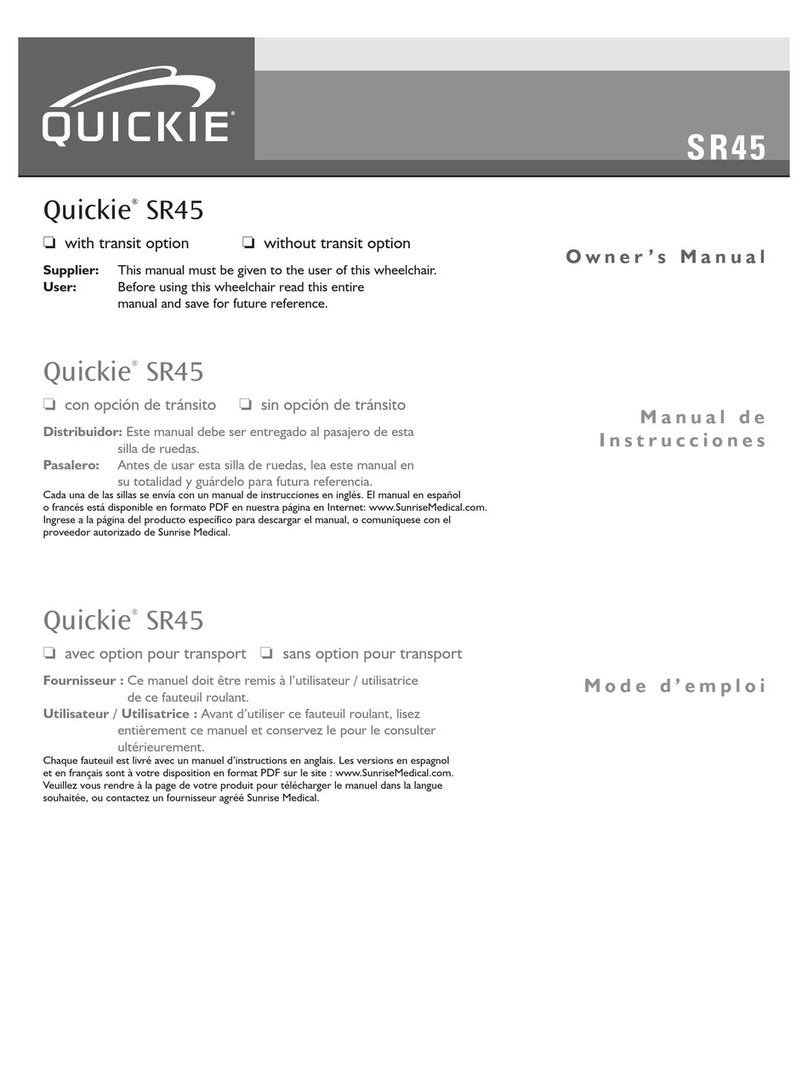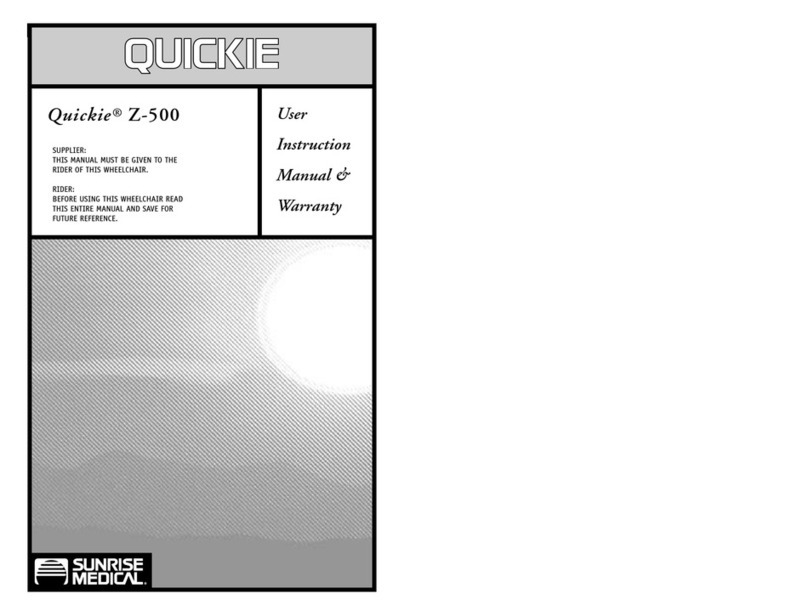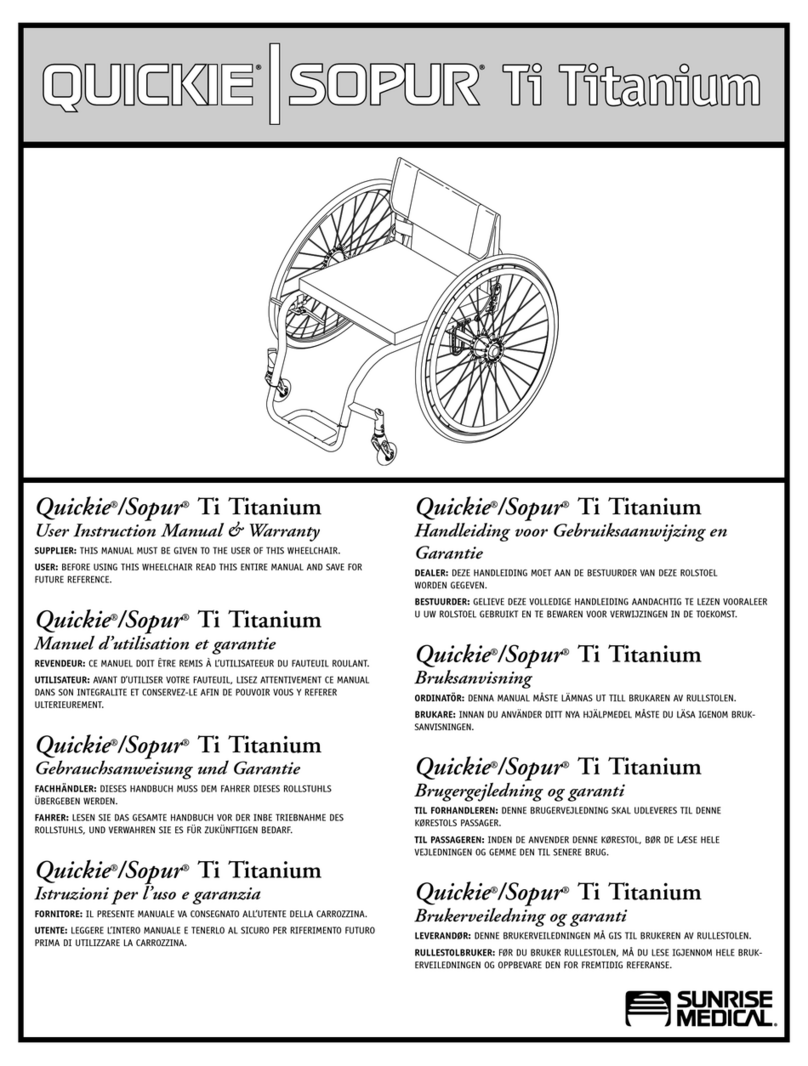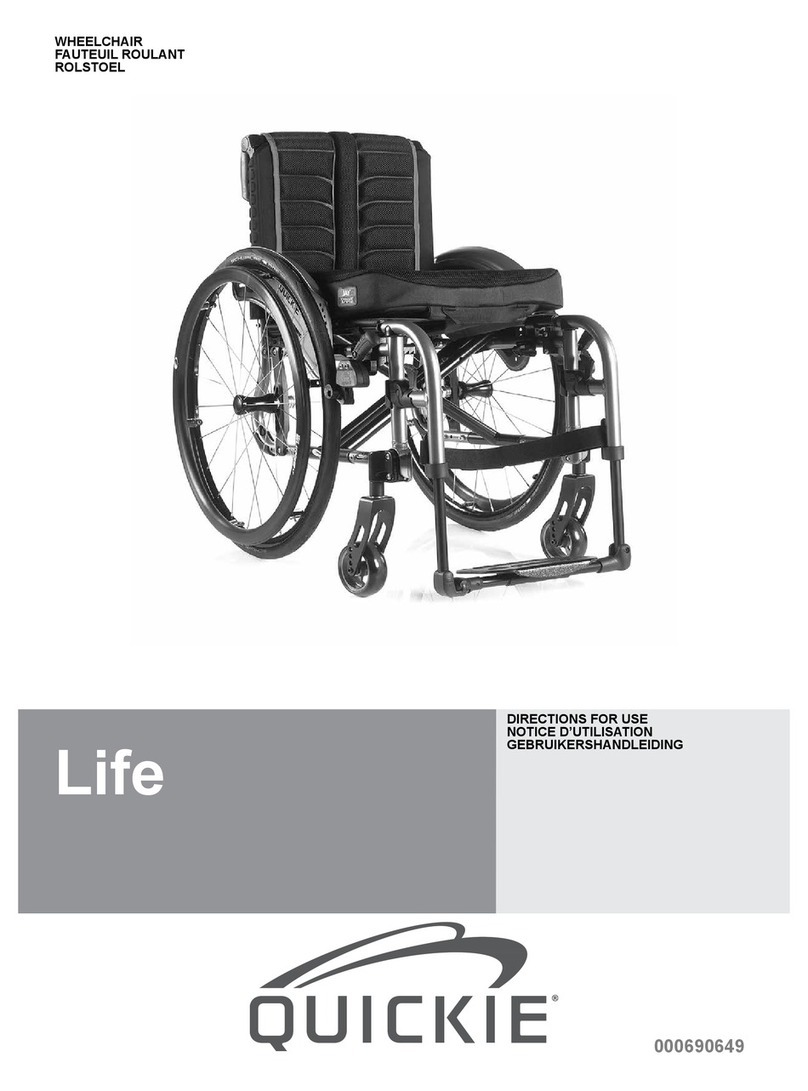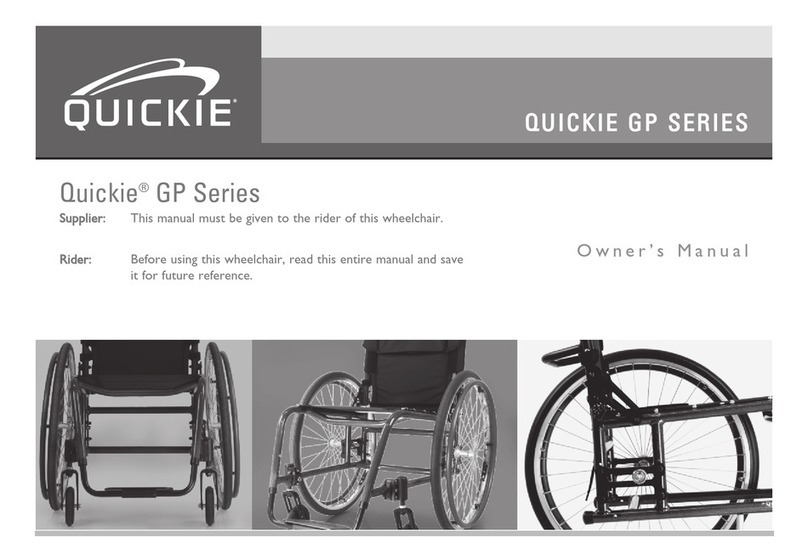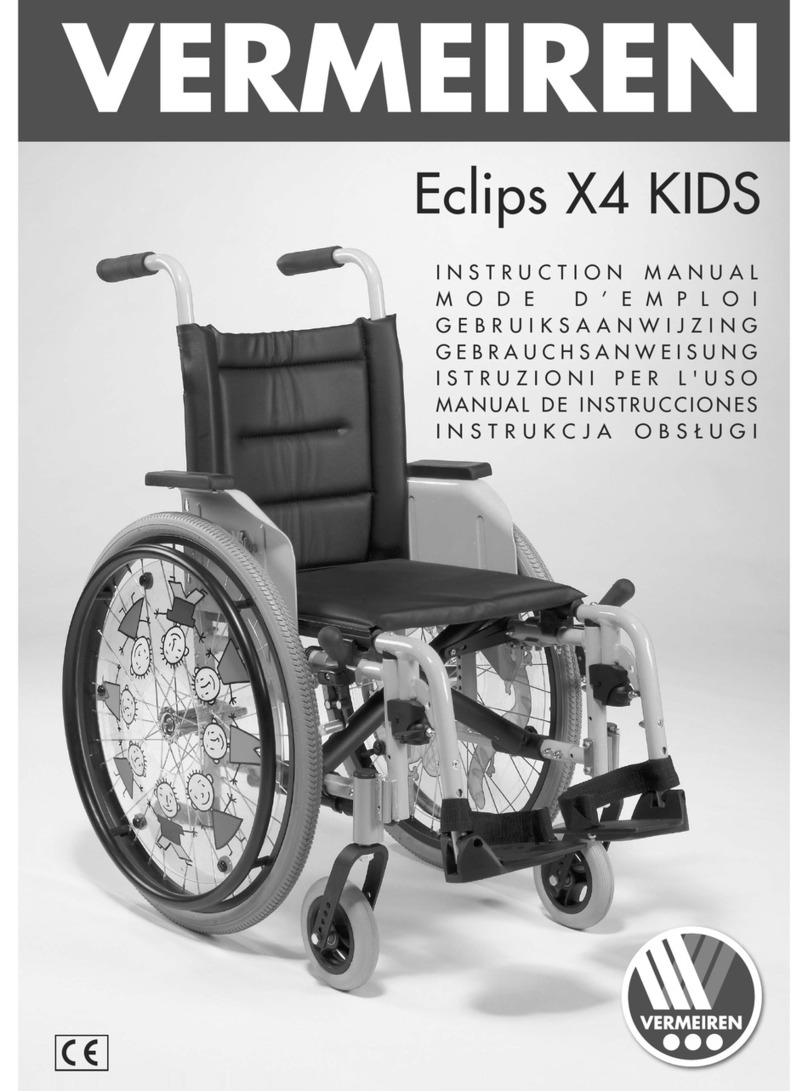
EASY 160i 5
ENGLISH
1.0 General Safety Notes and Driving Limits
The engineering and construction of this wheelchair has been
designed to provide maximum safety. International safety
standards currently in force have either been fulfilled or
exceeded in parts. Nevertheless, users may put themselves at
risk by improperly using their wheelchairs. For your own safety,
the following rules must be strictly observed.
Unprofessional or erroneous changes or adjustments increase
the risk of accident. As a wheelchair user, you are also part of
the daily traffic on streets and pavements, just like anyone else.
We would like to remind you that you are therefore also subject
to any and all traffic laws.
Be careful during your first ride in this wheelchair. Get to know
your wheelchair.
Before each use, the following should be checked:
• Quick-Release Axles for Rear Wheels
• Velcro on seats and backrests
• Tyres, tyre pressure, and wheel locks.
Before changing any of the adjustments of this wheelchair, it is
important to read the corresponding section of the Owner’s
manual.
It is possible that potholes or uneven ground could cause this
wheelchair to tip over, especially when riding uphill or downhill.
When riding over a step or up an incline frontally, the body
should be leaning forward.
DANGER!
NEVER exceed the maximum load of 140 kg for driver plus any
items carried on the wheelchair. If you exceed the maximum
load, this can lead to damage to the chair, or you may fall or tip
over, lose control and may lead to serious injury of the user and
other people.
When it is dark, please wear light clothing or clothing with
reflectors, so that you can be seen more easily. Make sure that
the reflectors on the side and back of the wheelchair are clearly
visible. We would also recommend that you fit an active light.
To avoid falls and dangerous situations, you should first
practice using your new wheelchair on level ground with good
visibility.
When getting on or off the wheelchair, do not use the
footboards. These should be flipped up beforehand and swung
to the outside as far as possible. Always position yourself as
close as possible to the place where you wish to sit.
Only use your wheelchair properly. For example, avoid travelling
against an obstacle without braking (step, kerb edge) or
dropping down gaps.
The wheel locks are not intended to brake your wheelchair. They
are only there to ensure that your wheelchair does not begin
rolling unintentionally. When you stop on uneven ground, you
should always use the wheel locks to prevent such rolling.
Always apply both wheel locks; otherwise, your wheelchair could
tip over.
Explore the effects of changing the centre of gravity on the
behaviour of the wheelchair, for example on inclines, slopes, all
gradients or when overcoming obstacles. Do this with the secure
aid of a helper.
With extreme settings (e.g. rear wheels in the most forward
position) and less than perfect posture, the wheelchair may tip
over even on a level surface.
Lean your upper body further forward when going up slopes and
steps.
Lean your upper body further back when going down slopes and
steps. Never try to climb and descend a slope diagonally.
Avoid using an escalator which may lead to serious injury in the
event of a fall.
Do not use the wheelchair on slopes > 10°. The Dynamic safe
slope is dependant on the chair configuration, the users abilities
and the style of riding. As the users abilities and style of riding
cannot be pre-determined then the max safe slope cannot be
determined. Therefore this must be determined by the user with
the assistance of an attendant to prevent tipping. It is strongly
recommended that inexperienced users have Ant-tips fitted.
It is possible that potholes or uneven ground could cause this
wheelchair to tip over, especially when riding uphill or downhill.
Do not use your wheelchair on muddy or icy ground. Do not use
your wheelchair where pedestrians are not allowed.
To avoid hand injuries do not grab in between the spokes or
between the rear wheel and wheel lock when driving the
wheelchair.
In particular when using lightweight metal handrims, fingers will
easily become hot when braking from a high speed or on long
inclines.
Only attempt stairs with the help of an attendant. There is
equipment available to help you, e.g. climbing ramps or lifts,
please use them. If there is no such equipment available, then
the wheelchair must be tipped and pushed, never carried, over
the steps (2 helpers). We recommend that users over 100 kg in
weight do not use this stairway manoeuvre!
In general, any anti-tip tubes fitted must be set beforehand, so
that they cannot touch the steps, as otherwise this could lead to
a serious fall. Afterwards the anti-tip tubes must be set back to
their correct position.
